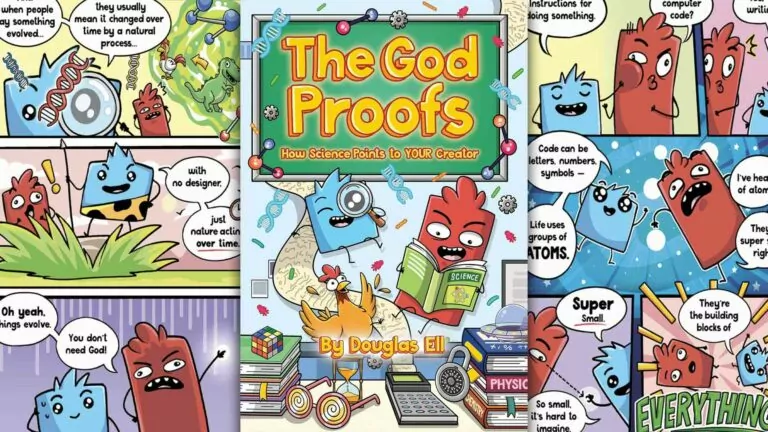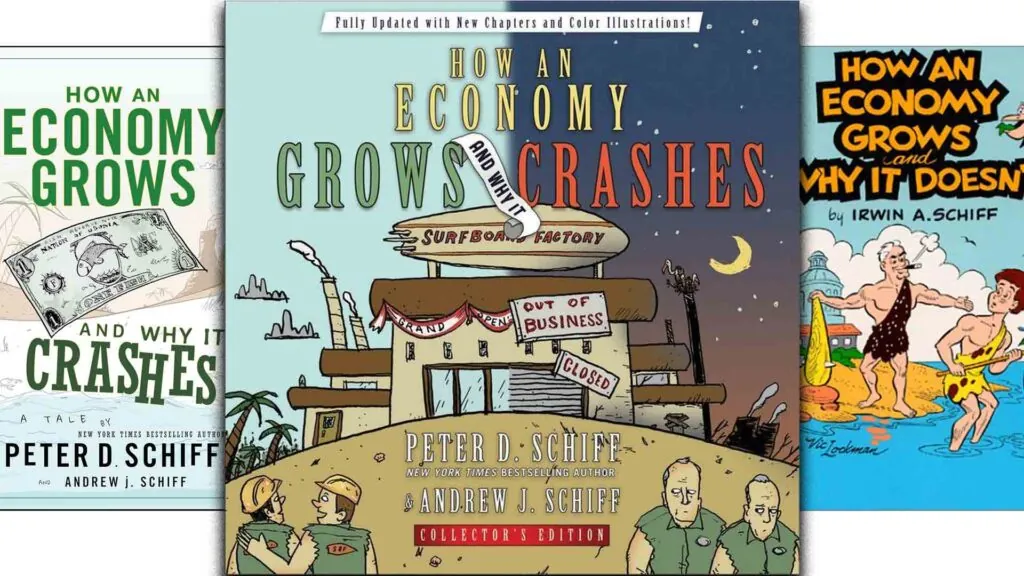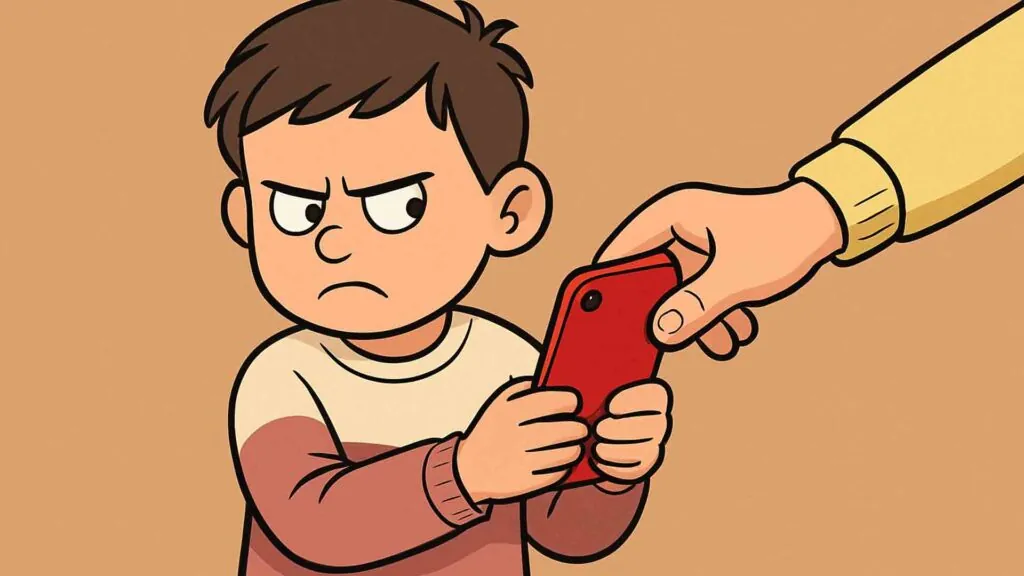by Douglas Ell
2024 / 207 pages
A blue square with legs, arms eyeballs and mouth, wants to prove to his red rectangle friend that God exists, and he offers up three separate “proofs.”
This is a fun educational comic, but problematic in that this initial set-up implies that the evidence for God is not patently obvious to all, which is contrary to what Romans 1:19-20 tells us is so.
“…since what may be known about God is plain to them, because God has made it plain to them. For since the creation of the world God’s invisible qualities – his eternal power and divine nature – have been clearly seen, being understood from what has been made, so that people are without excuse.”
So trying to “prove” God’s existence to an agnostic or atheist, is less about them having intellectual or logical objections, and more a matter of stubborn rebellion. God says someone who doesn’t acknowledge His existence can only do so by suppressing the implications o everything he sees around him in God’s brilliant creation.
Apologetics – defending the faith – is less about debate, and more about declaring what’s what. It’s akin to the approach you’d take with a child who can’t hardly speak because his mouth is too full, even as he protests he doesn’t know anything about any missing piece of cake. We can’t and shouldn’t take his protest seriously. We need to understand that atheists and agnostics are liars more than doubters.
But can we lie to ourselves, and so convincingly that we believe it? Yes indeed. We live in a time when folks are literally saying, with straight faces, that a 6’5″ guy with a beard can be a girl, and this sort of self-deception isn’t limited to folks with multiple degrees (though it does seem to find a particular harbor there). So there can be some benefit to, as Paul writes in 2 Cor. 10:5, demolishing “arguments and every pretension that sets itself up against the knowledge of God.” We can help the sincerely confused by helping them work through their self-deceptions.
The book also pitches “Science” as the final arbiter of truth. But this makes an idol of Science, placing it above God. The scientific method is a great tool, but like everything else in our fallen world, it can be twisted by bias and fallibility. Have we mentioned that we humans are really good at lying to ourselves?
With that in mind, this comic could be a great tool for helping the confused, and for our own encouragement, since this highlights some astonishing fingerprints God has left on His creation.
The blue square offers up three proofs, but I’ll touch on just one: “the numbers proof.”
The numbers proof highlights that all of life is built on incredibly complex “code” that could never have come about by chance. What’s this code? DNA, and not only do we come with code, all of our cells come with miniaturized code – or DNA – printers.
This numbers proof is built on the fact that you have “3.2 billion letters of DNA code in almost all of your thirty trillion cells.” That’s a lot of letters, and like the letters of the alphabet, they don’t mean anything unless they are assembled in a precise order.
Blue square goes on to illustrate that the odds of getting a particular order of even something as small as the paragraph just above – the one in bold – just by chance is beyond infinitesimal.
“Suppose that every atom in the universe is also a blind chicken pecking at a keyboard. …And suppose each of these atoms/chickens is typing at lightning speed: one hundred million trillion, trillion, trillion letters per second. …. If you all type for a trillion, trillion years, and don’t take any bathroom breaks, you still have an almost unimaginably small chance…any of your atom/chicken friends would ever type this short phrase.”
There’s much more to this odds argument, spelling out how it is more impossible than even this makes it out to be. So how is this a “proof” of God? Well, if chance and time can’t make us, then the alternative is that we are the intentional product of a Supernatural Mind.
Cautions
There is, on page 120, a brief appearance of God as a grey-bearded white robed painter, painting canvases of DNA and animals He’s designed. It is just the one panel, but why?
Conclusion
The comic format makes some otherwise complicated scientific information pretty accessible. I think any high schooler would be able to work through this, and the engaging format means at least some of them will want to too.
These are engaging evidences, but we need to remember how to use them. Don’t attempt to prove God’s existence: proclaim it, and then use this material to show how God’s creation shouts His Name too. It might seem a subtle difference, but it is a significant one. It’s the difference between elevating Man’s intellect, or glorifying God instead.
So… a good tool for Christians, but not a book you should just hand out to unbelievers.












